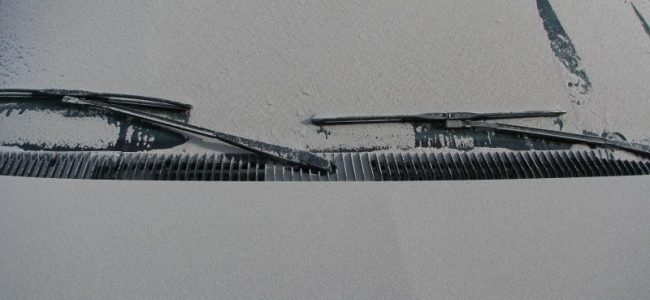Volcanic Eruption Preparedness

Some Resource Links:
Below are several different resources for dealing with a volcanic eruption ash event. These resources are put out by International, Federal, State, and Local Government agencies. CPH is providing these resources all in one location for ease of use.
Spurr Ashcloud Projection (Constantly Updated)
Ash Alert Homeland Security – Protect your family, home and business
KPB Emergency Management – Volcanoes
U.S. Geological Survey – Volcano Ashfall Checklist
International Volcanic Health Hazard Network Guidelines – Before During and After Ashfall
International Volcanic Health Hazard Network Guidelines – Health Hazards of Volcanic Ash
The best way to protect yourself and your property is to prepare. Consider the following:
- Know Your Risk: The Kenai Peninsula Borough’s biggest risk is from ash. Stay indoors during the ashfall event. Ash can damage surfaces and cause mechanical issues to vehicles or recreational vehicles. Conditions may also cause health issues such as impaired breathing or vision. For information on health-related tips, visit the International Volcanic Health Hazard Network at https://www.ivhhn.org/index.php/
- Prepare Your Home: Check how your heating system, boiler, and water heater pull air into the system. These systems may pull air from outside for combustion, which could cause damage. Review manufacturer guidelines on protecting these systems from ash.
- Prepare Your Vehicles: Cover vehicles and avoid driving until the ashfall has dissipated. Buy extra air filters and have bottled water on hand to clean off windshields before using wipers; ash scratches.
- Replenish Home Emergency Supply Kit: Replace used or expired items (refer to page 26 of the Pocket Preparedness Guide).
- Sign Up for Alerts: Register for KPB Alerts to receive critical information during emergencies. The Volcano Notification Service (VNS) is a free service that sends notifications about volcanic activity.
- Create a Shelter-in-Place Plan: There may be situations when it’s simply best to stay indoors and avoid any uncertainty outside. Consider these recommendations when preparing for an eruption:
Develop a reunification plan with family membersHave a plan for pets and livestockSee manufacturer’s guide for replacing air filters to ensure proper use of forced air heating systemsSeal all windows, doors, and air vents
- with 2-4 mil thick plastic sheeting. Consider measuring and cutting the sheeting in advance to save time
Monitor media for updates,
- including TV, radio, and official social media sites
- Volcanic Eruption Preparedness Checklists: Go to page 52 of the Pocket Preparedness Guide for Home and Auto Preparation Checklists
If an eruption happens, stay indoors during the ashfall event.
- Activate the family reunification plan to ensure loved ones reconnect for safety indoors.
- Activate your Shelter-in-Place Plan.
- Keep pets indoors. Clean paws to prevent furry friends from tracking in ash.
- Provide fresh water and food to livestock. For more information, visit “A Guide for Livestock Owners“.
- Close windows, air vents, and monitor fireplace dampers.
- Turn off fans or air conditioning.
- Cover outdoor wood piles.
- Protect your electronics: cover and avoid using personal computers, stereos, or other sensitive equipment.
- Do not drive without an air filter.
- If driving is crucial, drive slowly, use headlights and ample windshield fluid. Hose off ash before washing surfaces to avoid possible damage; ash scratches.
Workplace Preparation During an Ashfall
- Know your workplace safety or “Continuity of Operations Plan” (COOP).
- Limit or avoid using building intake systems, depending on manufacturer recommendation.
- Use plastic sheeting or bags to protect office equipment such as copier and personal computers.
- Don’t operate non-essential equipment.
To receive critical information after an eruption, sign up for KPB Alerts!
- Limit outdoor activities for children and pets until the ash settles.
- Wear a mask and goggles if you must go outside or when cleaning ash.
- Avoid driving motorized vehicles; volcanic ash can potentially damage engines.
- Limit tracking ash indoors by designating an area to change clothing and shoes.
- Vacuum furniture, carpets, drapery, etc. and try not to wipe surfaces; ash scratches.
- Brush, shake, and presoak clothes. Use plenty of water and detergent.
- Wait until ash settles to run exhaust fans or clothes dryers.
- Avoid burning wood if you have an alternate heating source. The combination of ash and burning gas can cause irritation to skin, eyes, and respiratory system.
- When sweeping, dampen or use “Industrial Sweeping Compound” to avoid raising dust.
- Mow lawns when damp or water the lawn to incorporate the ash into the soil.
- Replace any items used from your Home Emergency Supply Kit.
Workplace Preparation After an Ashfall
- Clean electronics such as computer, television, and radio equipment using a vacuum cleaner.
- Replace any items used from the Workplace Emergency Supply Kit (page 101 of the Pocket Preparedness Guide).
Auto Preparation After an Ashfall
- Change oil, oil filters and air filters frequently; every 50-100 miles in heavy dust; every 500-1000 miles in light dust.
- Wash your car thoroughly with water to remove all ash. Do not scrub; ash scratches. Wash the engine compartment with a garden hose or steam cleaner. Be sure to seal off air intakes and electrical components before cleaning.
- Have a service garage clean wheel brake assemblies every 50-100 miles for very severe road conditions, or every 200-500 miles for heavy dust conditions. The brake assemblies should be cleaned with compressed air.
- Have a service garage clean alternators with compressed air after heavy accumulation, every 500 to 1000 miles, or after severe dust exposure.
- Replace any items used from your auto emergency supply kit.

